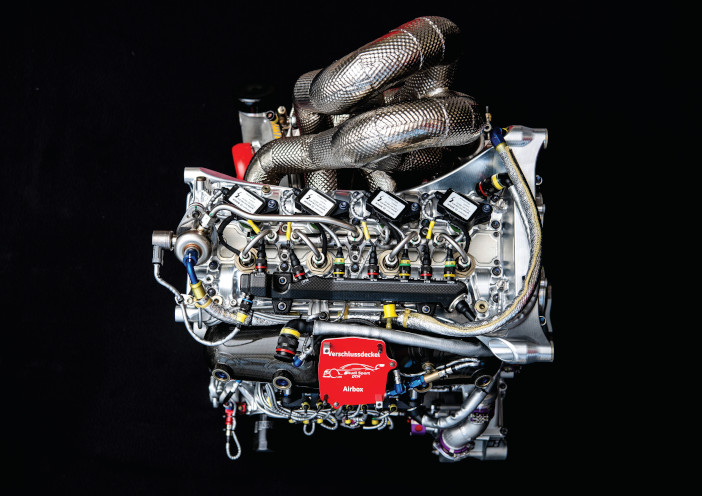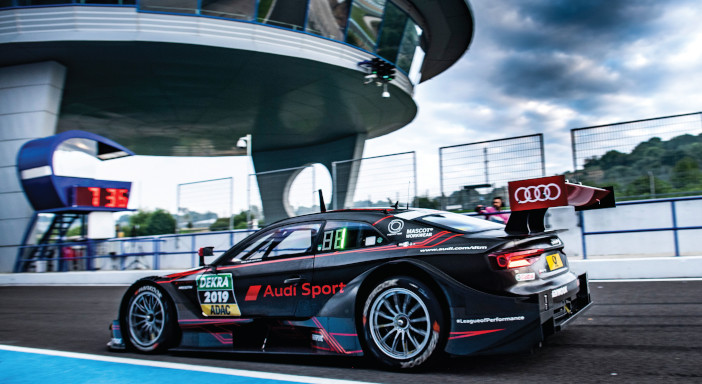When the 2019 DTM season gets underway in May at Hockenheim, the German series will see its most significant change since the competition was revived after a three-year absence in 2000. The trusted, naturally aspirated 4-liter V8 engines will make way for 2-liter, four-cylinder power units with turbochargers.
While downsizing of engines has been the norm for road cars for the last decade, manufacturers involved in the DTM race series have still relied on the trusted, but somewhat archaic, 4-liter V8 engine that was introduced for the series’ revival in 2000. In line with road car production, the need for a move toward smaller machinery has been felt in the DTM. Ulrich Baretzky, head of engine development at Audi Motorsport, says, “The V8 was simply no longer feasible for this day and age, so we wanted a new engine that was state-of-the-art and also with an eye on reducing fuel consumption.”
Halfway through the 2000s, when Audi was very much involved in endurance racing, Baretzky had already come up with a concept for a small-sized turbocharged engine – known as the Global Race Engine – with a wide scope of possibilities for use in motorsport categories. “What we have now in the DTM is pretty similar to what we had in mind back then,” he says. “The engine is a 2-liter, but if it is deemed necessary in the future it will be easy to reduce the capacity by simply cutting off one cylinder.”
“The new DTM engine has been developed to run on the most demanding fuel available, namely regular fuel that you get from any gasoline station. That is very important, because it ensures the relevance of the race engine for production car engine development as well,” Baretzky emphasizes. For years the DTM has been using 102 octane fuel from series partner Aral, the German brand of the BP group.
“Fuel efficiency is important as well, because the amount of fuel that is allowed to run into the engine has been limited to 95kg [210 lb] per hour. This may sound as a lot, but in reality it isn’t, given the engine power of over 600hp. Therefore the engine’s design allows high compression rates and a high efficiency level to get the maximum from the fuel.”
A last-minute change in the DTM regulations saw a push-to-pass function added to enhance overtaking. By temporarily increasing the fuel flow, an additional 30hp becomes available. Baretzky says, “This was not so easy to realize, because 30hp is quite a lot, but we have achieved it.”
Fuel consumption is only one aspect of the new DTM power unit. “The turbo engine comes with many other elements that each have their own requirements: turbo boost, charge air temperature, adaptation to the environment – these are more complex with a turbo engine because it has a high vibration intensity,” Baretzky explains. “The vibrations cause problems for instance on the dyno, but we have been able to solve the issues.”
Durability is another aspect because cost-saving has been a focal point in the development process of the new engine. “Regulations require that an engine lasts throughout the season, a mileage of around 6,000km [3,700 miles],” says Stefan Dreyer, head of drivetrain at Audi Motorsport. “That means we have to be 100% certain that the engine really will last that long. It’s a huge responsibility.”
Equally as important as the power and the brawny looks of DTM touring cars to fans is their sound. Baretzky, who once famously responded that noise is only wasted energy when race fans complained about the silent diesel-powered Audi LMP1 prototypes, is quick to turn down any fears in this regard. “The first time I actually heard the new engine on the track, I was surprised by how aggressive it sounds,” he says. “It revs up to 9,500rpm and has an excellent throttle response. Fans can really look forward to it.”

The introduction of the turbo engine has had an effect on the design of the vehicle. Stefan Dreyer says, “We had to change the entire front section of the car to create space to accommodate the intercooler, the position of water and oil coolers, all the lines and hoses, and the guidance of the combustion air to the engine in the best possible way.”
A huge weight reduction was also realized. While the V8 engine used last year weighed 148kg (326 lb), the new 2-liter engine weighs only 84kg (185 lb).
The start of the season with the debut of the new engines is eagerly awaited by all motorsport enthusiasts and Baretzky is confident they will not disappoint. He says, “We have come so far in the development of turbo engines. When I started as a young engineer at BMW many years ago, we had an output of 580hp from 1.5 liters – but with zero restrictions and free fuel flow.
“So now, to have 600hp and more with all the limitations and efficiency
we have, is impressive. Back then the engine had to last 400km [250 miles]. Now, we have a lifespan of 6,000 miles.
“I am sure we will have an exciting new era in DTM and beyond with the turbo engines.”



